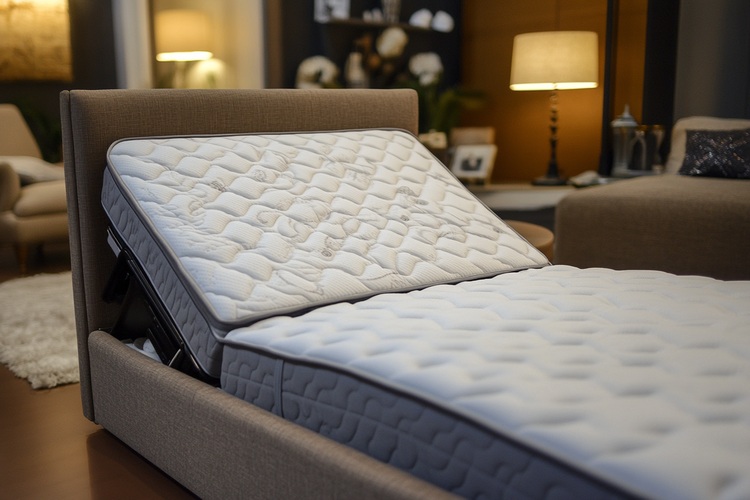Choosing the Ideal Bed: Comfort, Size, Materials & Style
Selecting the right bed is more than a decor decision — it shapes your sleep, comfort, and wellbeing. This comprehensive guide explains bed sizes, frame materials, support systems, and design options, plus price ranges and practical tips to help you pick a bed that matches your space, budget, and sleep needs.

Understanding bed sizes and how they fit your space
Beds come in standard sizes that suit different sleepers and room dimensions. Twin (38” x 75”) is perfect for children, small bedrooms, or single adults who need a compact solution. Full (54” x 75”) gives extra width for a solo sleeper who wants more room or for smaller guest spaces. Queen (60” x 80”) is the most popular choice for couples, balancing sleeping area with bedroom footprint. King (76” x 80”) offers maximum horizontal space for partners who value personal room, while California King (72” x 84”) adds length for taller sleepers. When measuring your room, leave clearance for walking, bedside tables, and doors — a bed that fits the floor plan makes the entire room more functional.
Frame materials and construction: durability matters
The material of a bed frame affects longevity, appearance, and maintenance needs. Solid wood frames convey classic style and can last many years if cared for, though they may require occasional refinishing or tightening. Metal frames are strong, often lighter, and tend to cost less; they can suit modern, industrial, or minimalist interiors. Upholstered beds bring softness and a touch of luxury with fabric- or leather-covered headboards and rails; they can show wear faster and may need more upkeep to prevent stains or sagging. Engineered wood or MDF options are budget-friendly and can look attractive initially, but they typically don’t endure as long as solid wood or metal. When checking a frame, look for reinforced joinery, center supports for larger sizes, and whether replacement parts or warranties are offered.
Support systems and mattress compatibility
How the bed supports a mattress is crucial for comfort and warranty compliance. Traditional frames commonly pair with box springs, which add height and absorb shock. Platform beds feature built-in slats or a solid deck so a box spring isn’t necessary. Slat spacing influences mattress performance—most manufacturers recommend slats no more than 2.75 inches apart to prevent sagging and protect warranties. Memory foam and latex mattresses often need closer slat spacing or a solid platform to maintain their structure and avoid premature wear. Adjustable bases require specific mattress types and may add features like elevation for reading, reduced snoring, or improved circulation, so always confirm mattress compatibility before buying.
Design, aesthetics, and how the bed affects your room
A bed is both a functional piece and a focal point. Sleigh beds, with their rolled or curved headboards and footboards, create a strong traditional statement. Canopy beds draw the eye upward and can make high-ceilinged rooms feel cohesive and dramatic. Modern platform beds emphasize clean lines and low profiles for contemporary spaces. Consider scale, color, and material in relation to existing furniture and long-term style preferences; a very trend-driven design may feel dated sooner than a timeless silhouette. Also think about headboard height relative to windows and artwork, and whether you need space underneath the bed for storage or easier cleaning.
Popular bed types and typical price ranges
| Bed Type | Average Price Range | Key Features |
|---|---|---|
| Platform Bed | $200-$1,000 | Built-in support, modern design |
| Storage Bed | $400-$1,500 | Integrated drawers or lift-up storage, space-saving |
| Adjustable Bed | $800-$3,500 | Adjustable positions, therapeutic features |
| Traditional Frame | $150-$800 | Box spring compatible, classic styling |
| Upholstered Bed | $300-$2,000 | Fabric-covered headboards, soft aesthetic |
Prices, rates, or cost estimates mentioned in this article are based on the latest available information but may change over time. Independent research is advised before making financial decisions.
Choosing based on lifestyle and long-term value
Think beyond immediate preferences. If you move frequently, select a bed that disassembles easily. If you have pets or young children, choose durable, easy-to-clean materials. Consider warranty terms and whether the manufacturer offers replacement parts; these factors often indicate how confident a brand is in its construction. Factor in associated expenses such as delivery, professional assembly, mattress purchase, protective covers, and optional accessories like headboards or under-bed organizers.
Practical tips for test-sleeping and final selection
Try mattresses and frames in-store when possible: spend at least 10–15 minutes lying in your natural sleep positions. Check return and trial policies — many retailers offer at-home trials that can be important for memory foam or hybrid mattresses. Verify measurements before purchase: measure doorways, stairwells, and elevator dimensions to ensure the bed can be delivered into the intended room. Ask about slat spacing, center supports for larger sizes, and whether the frame requires a box spring or supports a mattress directly. Finally, balance comfort and durability with your budget; a mid-priced, well-constructed bed often delivers better long-term value than a very cheap option.
A thoughtfully chosen bed enhances sleep quality and strengthens the overall look and function of your bedroom. By matching size, materials, support systems, and style to your life and space, you can invest in a bed that feels comfortable, performs well, and remains satisfying for years to come.






